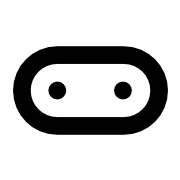Introduction to the Forever Loop
The forever loop is a fundamental concept in programming, particularly in environments like Microsoft MakeCode. It allows a section of code to run continuously, enabling real-time updates and interactions within your program. This is particularly useful for tasks that require constant monitoring or updates, such as reading sensor data or responding to user inputs.
Key Features:
- Continuous Execution: The code inside the forever loop runs indefinitely, making it ideal for tasks that need to be constantly checked or updated.
- Event-Based: Unlike traditional loops, the forever loop is event-based, meaning it can yield control to other parts of the program, allowing for smoother operation and responsiveness.
- Integration with Other Functions: You can easily integrate the forever loop with other functions and events, such as button presses or sensor readings, to create interactive applications.
Use Cases:
- Sensor Monitoring: Continuously check the readings from sensors (like temperature or compass) and update the display accordingly.
- User Interaction: Respond to user inputs in real-time, such as counting button presses or changing outputs based on user actions.
- Game Development: Keep the game state updated, such as moving sprites or checking for collisions, ensuring a dynamic gaming experience.

